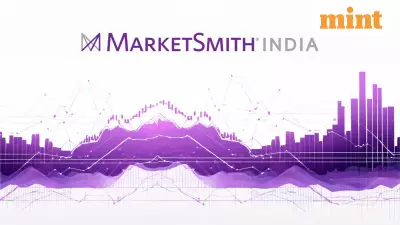
The once-booming market for small and medium enterprise (SME) initial public offerings (IPOs) is experiencing a dramatic shift as retail investors rapidly withdraw from what was previously considered a guaranteed lottery ticket. The frenzy that characterized 2024 has completely evaporated in 2025, replaced by cautious skepticism and significantly diminished returns.
The Great SME IPO Boom and Bust
India's IPO landscape in 2025 continues to be dominated by small and medium enterprises, with 220 firms raising ₹9,453 crore from public markets—marking a 7% increase over last year's total with more than a month remaining. This builds on 2024's record-breaking performance where 245 SME companies mobilized ₹8,761 crore.
However, the resemblance between the two years ends there. While 2024 saw retail investors driving median subscriptions to a staggering 137 times and generating median listing-day gains of almost 40%, the current year tells a completely different story. Median retail subscription rates have collapsed to just seven times, while listing gains have evaporated to a mere 4%.
Regulatory Crackdown and Market Reality
The dramatic shift stems from two key factors: volatile equity markets that have dampened speculative gains, and tighter regulations from the Securities and Exchange Board of India (SEBI) that have directly targeted the speculation that defined the 2024 SME boom.
Effective from 1 July 2025, new norms require SME issuers to post at least ₹1 crore in operating profit in two of the past three years. The regulations also cap promoter offer-for-sale at 20%, prohibit repayment of promoter loans from IPO proceeds, and significantly increase the minimum retail bid size from ₹1 lakh to ₹2 lakh.
SEBI has additionally banned the cut-off bidding strategy and disallowed bid cancellations to rein in speculation. These measures have fundamentally changed the investment landscape for SME IPOs.
Vanishing Enthusiasm and Dismal Performance
The data reveals a stunning collapse in retail participation. Average retail applications per SME IPO have plummeted from 187,000 in 2024 to just 55,000 in 2025, according to Pranav Haldea, managing director of PRIME Database Group.
The subscription distribution patterns highlight this behavioral shift dramatically. In 2024, not a single issue was undersubscribed, and over half (57%) drew more than 100 times retail bids. This year, approximately 9% of issues have failed to get fully subscribed, while only 21% saw triple-digit bets.
Nearly half (48%) of the issues drew less than 10 times subscription in 2025—a sharp increase from just 4% in 2024—indicating that the speculative base has shrunk significantly.
The collapse in listing performance is even more striking. In 2024, 33% of SME IPOs gained over 50% on debut, with nearly 11% more than doubling their issue price. In 2025, only 12% have managed listing gains above 50%, and not a single IPO has doubled its issue price on debut day.
Worse still, approximately 36% of IPOs listed below their offer price this year, compared to only 11% in 2024. The National Stock Exchange's decision to cap SME listing gains at 90% above the offer price has practically killed the listing gain frenzy.
Long-Term Performance Tells Grimmer Story
If the listing-day performance seems disappointing, the long-term outlook appears even grimmer. Nearly 47% of issues listed in 2025 are already trading below their issue price before completing a year on the market. Similarly, 46% of issues listed in 2024 are now trading below their offer price.
According to Apurva Seth, head of market perspectives and research at SAMCO Securities, "Most SME IPOs are either overpriced or of questionable quality. Only a handful justify their valuations, and that's where limited genuine interest now resides."
The liquidity situation has become particularly concerning. "Liquidity dries up quickly once the hype is gone," Seth noted. "A lot of SME counters barely trade after a few weeks. Without credible disclosures and real growth plans, these stocks are just stranded capital."
Despite waning retail enthusiasm, the supply of SME IPOs hasn't significantly ebbed, primarily due to robust systematic investment plan (SIP) inflows into mutual funds that provide excess liquidity. However, the structural softening in demand suggests that the era of SME IPOs as retail investor lottery tickets has definitively ended.





